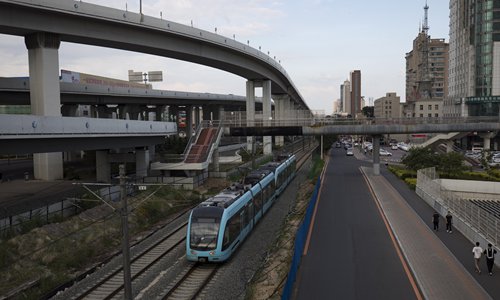Chinese-operated light rail in Mecca handles 2.4m trips during Hajj
2019-08-21 09:56:41
Summary:A light rail in Changchun, Northeast China's Jilin Province, in July Photo: ICThe Mecca Light Rail, built and...

A light rail in Changchun, Northeast China's Jilin Province, in July Photo: IC
The Mecca Light Rail, built and operated by China Railway Construction Corp (CRCC), has safely transported 2.4 million passengers by running almost 24 hours a day during this year's Hajj pilgrimage transport service in Mecca, Saudi Arabia.
CRCC operated the rail line for 156 hours during a seven-day operating period, leaving only 12 hours that the line was not operating, according to a press release sent to the Global Times on Thursday.
The railway, which links three pilgrimage areas, is 18.25 kilometers long and has nine stations.
This year, the Saudi government signed an operating contract worth $103 million with the company, according to CRCC. The two parties also signed a five-year memorandum of cooperation.
The Mecca Light Rail is Saudi Arabia's first light rail and the first of its kind built by a Chinese company in the Middle East.
The CRCC won the bid for the project in 2009. It provided service for more than 15 million trips during the 2010-14 period.
In 2018, CRCC won the light rail operating contract again, and successfully completed the pilgrimage operations.
Li Chongyang, vice general manager of CRCC, said that the light rail system originally planned to run 1,718 trains and actually ran 2,214.
Chinese railway companies have been actively participating in countries and regions along the China-proposed Belt and Road Initiative in recent years.
A consortium of China Railway and Norinco built the Orange Line metro in Lahore, Pakistan's second-biggest city.
Rolling stock maker CRRC supplied Boston's Orange Line with cars made in its plant in the US state of Massachusetts. Six brand new cars, the first of 152 ordered, went into service on Wednesday, the Massachusetts Bay Transportation Authority said in a statement sent to the Global Times.
